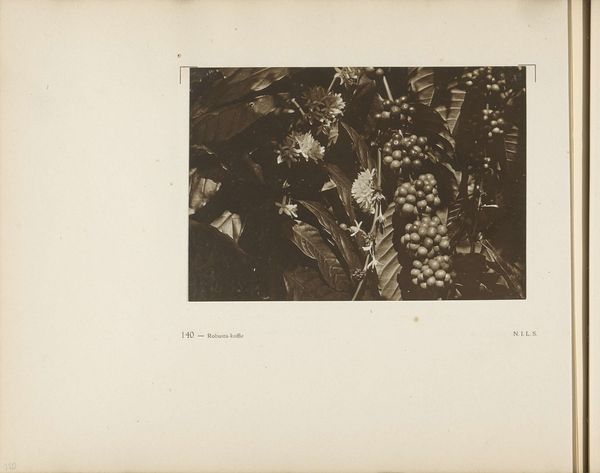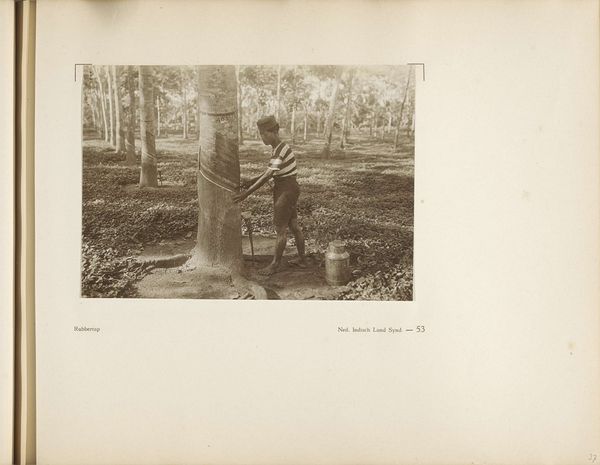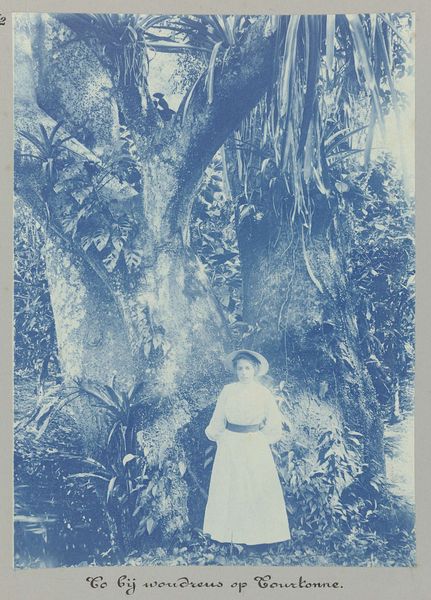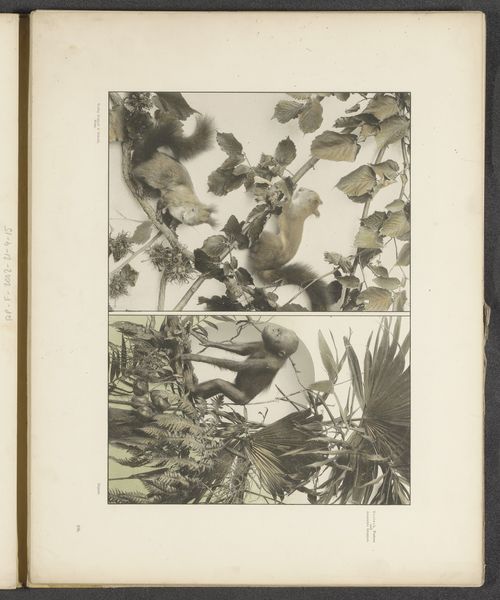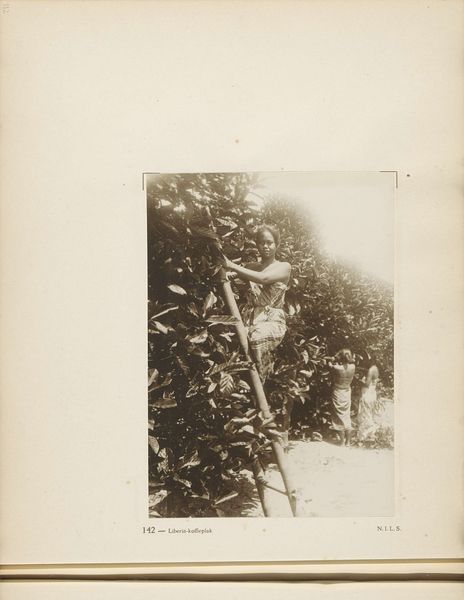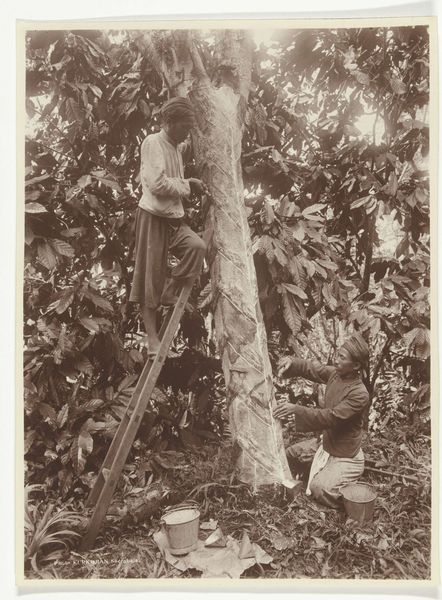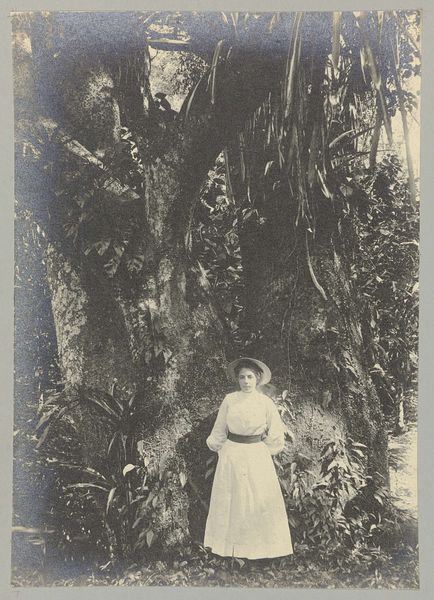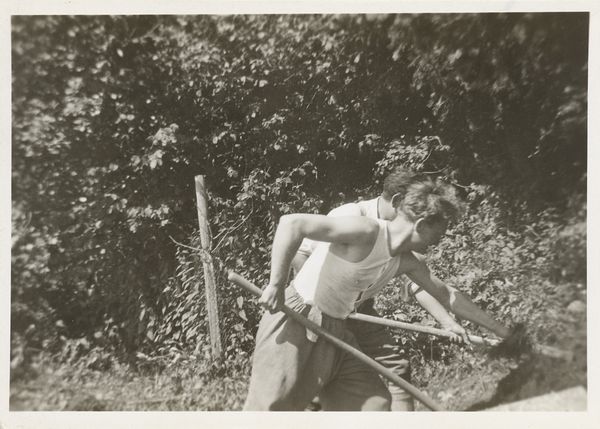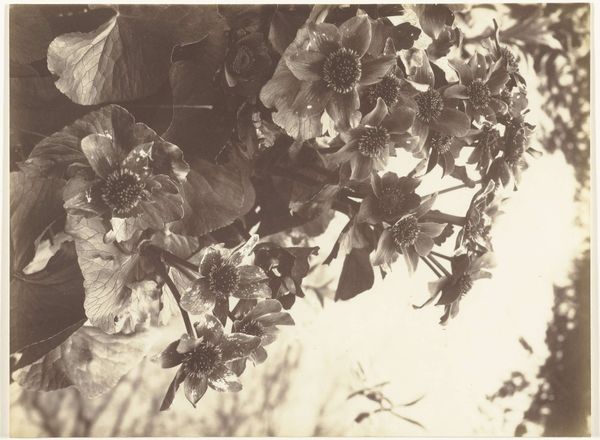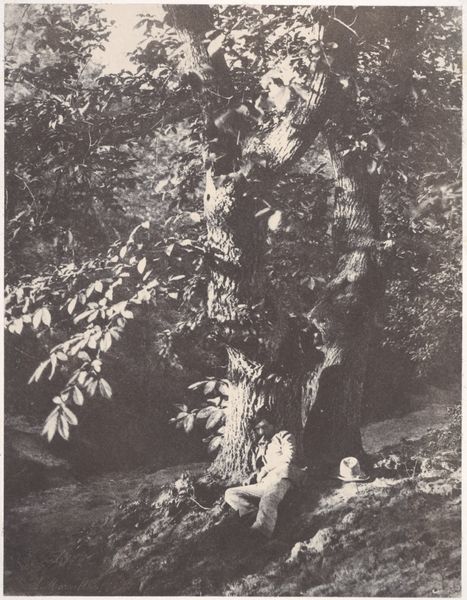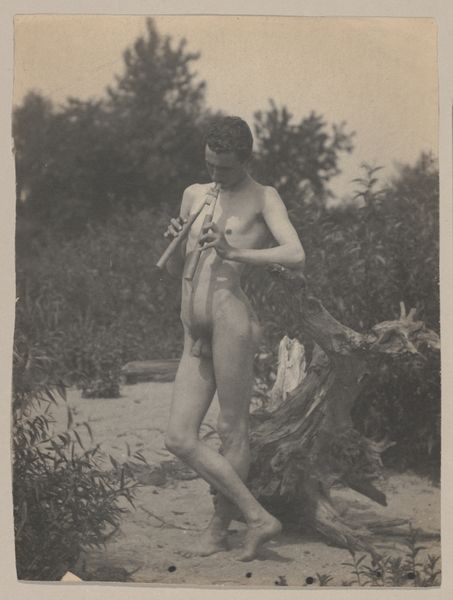
Pagina 141 van fotoboek van de Algemeene Vereeniging van Rubberplanters ter Oostkust van Sumatra (A.V.R.O.S.) c. 1924 - 1925
0:00
0:00
photography, gelatin-silver-print
#
portrait
#
dutch-golden-age
#
landscape
#
indigenism
#
photography
#
orientalism
#
gelatin-silver-print
#
realism
Dimensions: height 240 mm, width 310 mm
Copyright: Rijks Museum: Open Domain
Curator: Here we have "Page 141 from a photo book of the General Association of Rubber Planters on the East Coast of Sumatra (A.V.R.O.S.)," a gelatin silver print from circa 1924-1925 by J.W. Meyster, held in the collection of the Rijksmuseum. What are your first thoughts? Editor: The composition immediately strikes me. The subject, a young woman amidst foliage, is rendered with a subtle tonality that creates a tranquil and intimate viewing experience. Curator: Intimate is one word. I see a colonial gaze framing labor and the exotic Other, very consciously manufactured through photographic technologies to fulfill demands in Europe and the Americas for documentation, for proof of economic productivity and colonial holdings. Look at the woman, perhaps idealized, set against a lush backdrop—a romantic depiction intended to obscure the harsh realities of plantation labor. Editor: I grant you the socio-political context, but observe how Meyster uses light and shadow to define form. The way the light falls on her face, the soft gradations… it evokes a sense of idealized beauty reminiscent of, say, classical portraiture but transposed onto this scene of labor. Note how her face is partially obscured by the shadow and foliage; it almost elevates the image. Curator: Elevates? Or depersonalizes? By obscuring her face, she becomes less an individual and more a type, fitting into the Orientalist stereotype that fueled colonial power structures. How did these images function within a specific social system of production, circulation, and, above all, extraction of labor? That’s crucial. These photo books weren't hanging in art galleries but justifying exploitation to investors. Editor: But to disregard Meyster’s skill in image-making would be reductive. I return to the details. The soft contrast emphasizes textures – the leaves, her skin, the textile. This close attention invites contemplation, drawing us into the scene's aesthetic rather than purely its functional aspects. Curator: Yes, but this 'aesthetic' served to prettify the brutality inherent to colonial exploitation. The photographs normalized the brutal, everyday exercise of power. They were instruments of that power. Editor: A chillingly effective fusion of beauty and power… Perhaps art and social context are inseparably linked here, as they so often are. Curator: Precisely. Looking past mere aesthetics reveals deeper truths about the structures of production, power, and representation that photography actively helped to construct and sustain.
Comments
No comments
Be the first to comment and join the conversation on the ultimate creative platform.
